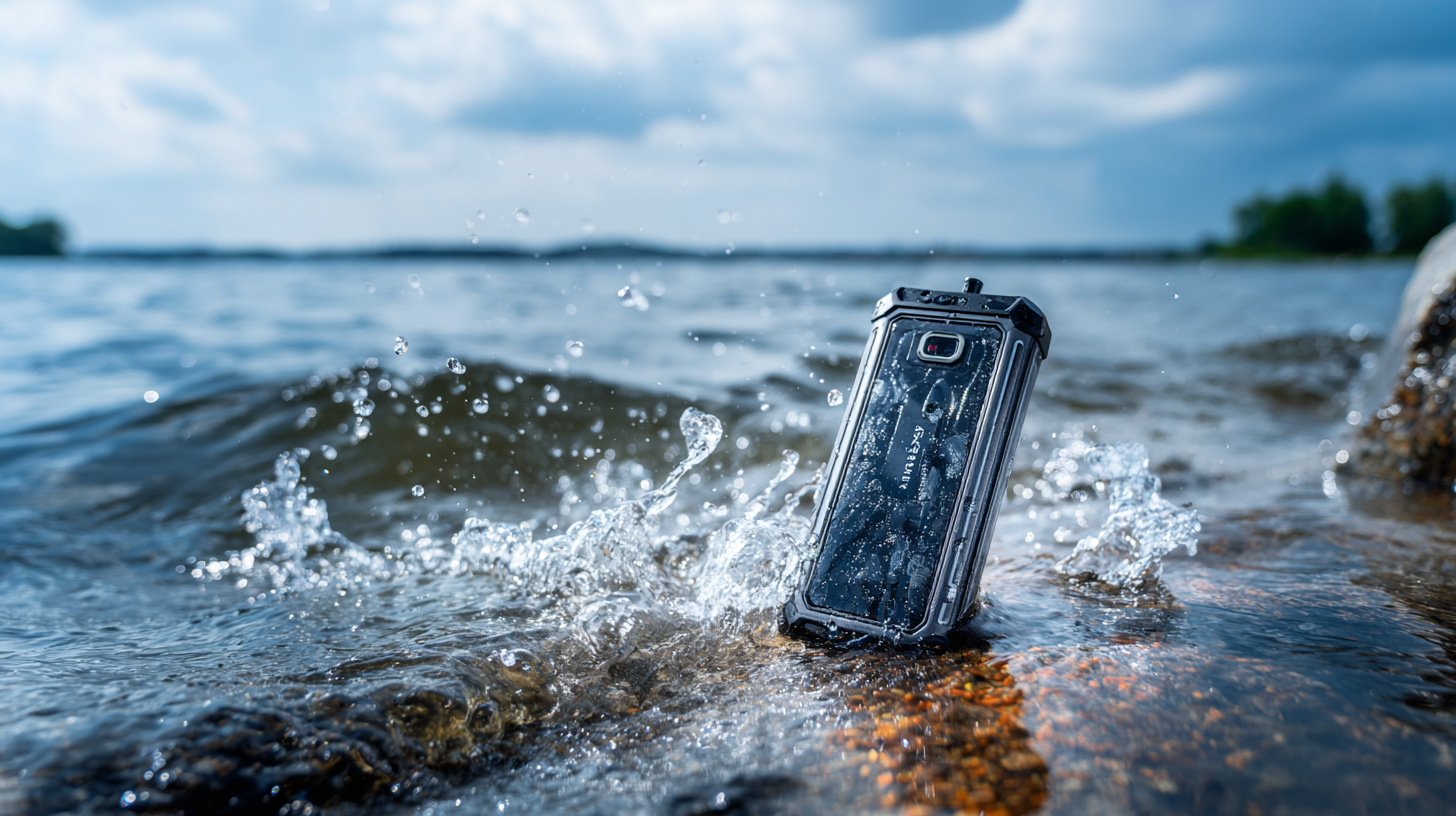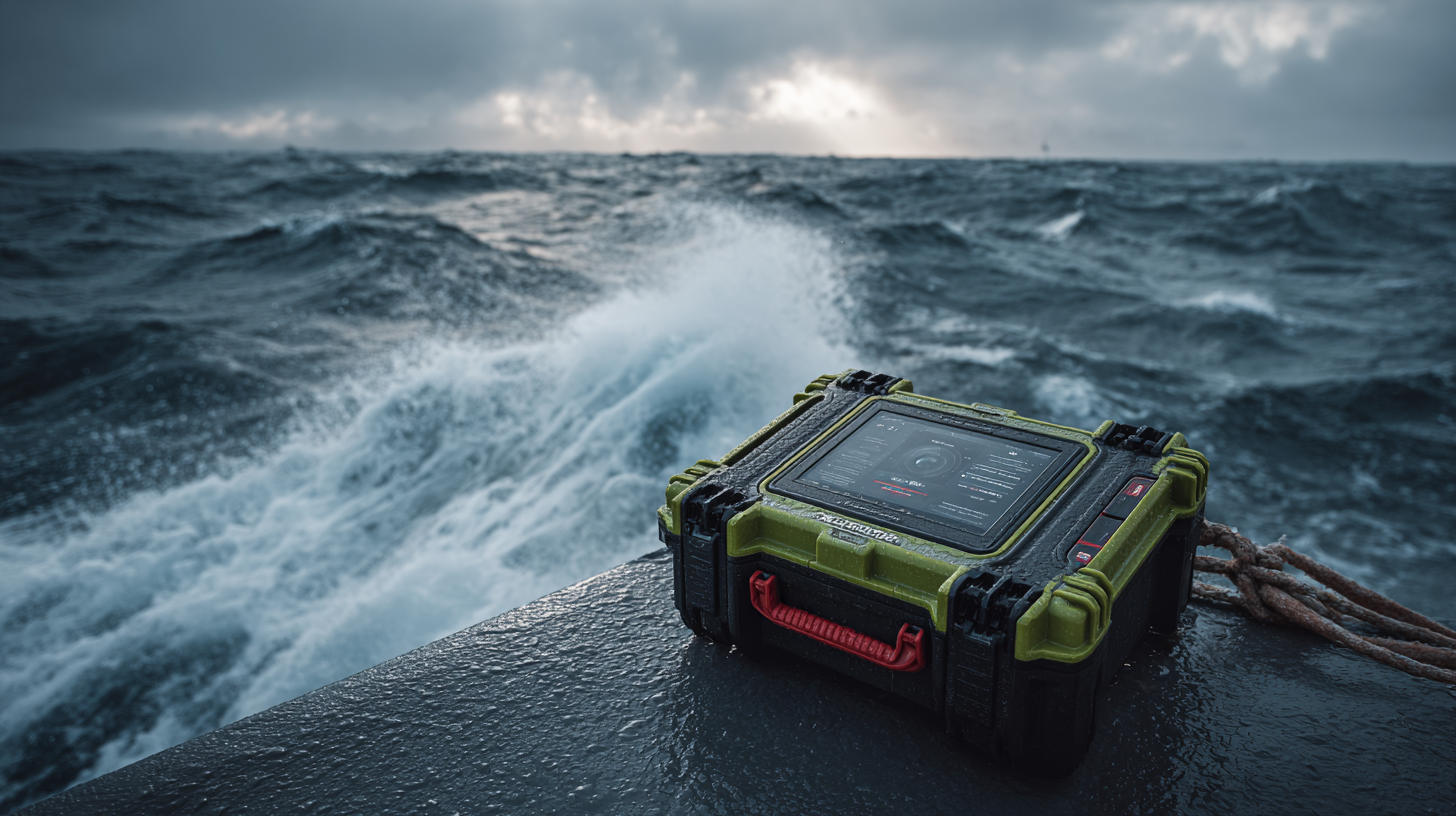
In the rapidly evolving landscape of battery technology, the demand for reliable power sources that can withstand extreme conditions is more critical than ever. The waterproof lithium battery emerges as a robust solution, catering to industries ranging from marine applications to outdoor technology.
According to a recent report by MarketsandMarkets, the global lithium-ion battery market is projected to reach USD 129.3 billion by 2027, with waterproof variants gaining traction due to their enhanced durability and performance in harsh environments. However, selecting a quality manufacturer poses challenges, particularly when assessing their capabilities to produce batteries that remain functional in extreme weather or water exposure.
This blog will delve into how to choose reputable manufacturers of waterproof lithium batteries, while also exploring effective solutions for overcoming the challenges associated with their application in severe conditions.

When selecting a manufacturer for high-quality waterproof lithium batteries, it is essential to consider the company's reputation and experience in the field. A trusted manufacturer should have a proven track record of producing batteries that can withstand extreme weather conditions while maintaining optimal performance. It's advisable to look for certifications and customer testimonials that highlight the manufacturer's ability to deliver reliable, high-performance products. Additionally, understanding the manufacturer's testing processes for waterproofing can provide assurance that their batteries will perform well in real-world applications.

Another critical factor to consider is the range of products offered by the manufacturer. Different applications may require specific battery configurations, such as varying voltage levels or form factors. A versatile manufacturer that offers a spectrum of options can better accommodate unique demands and keep pace with evolving technology. Moreover, exploring the manufacturer’s commitment to innovation can reveal their investment in research and development, crucial for creating batteries that not only meet current standards but also anticipate future challenges in extreme conditions.
When selecting waterproof lithium batteries for extreme conditions, several key features are essential to ensure reliability and performance. Firstly, it is crucial to consider the battery's ingress protection (IP) rating. A higher IP rating indicates better resistance to water and dust, which is vital for applications in harsh environments. For instance, batteries rated IP67 can withstand temporary immersion in water, making them ideal for outdoor electronics, marine applications, and emergency equipment.
Additionally, temperature tolerance plays a significant role in the functionality of lithium batteries under extreme conditions. Look for batteries that can operate effectively in a wide temperature range, typically from -20°C to 60°C. This capability ensures that the battery remains reliable even in the hottest or coldest weather scenarios. Furthermore, manufacturers should provide robust construction and materials that enhance durability and prevent damage from shock, vibrations, or corrosive elements often found in challenging environments. Ultimately, focusing on these key features can lead to optimized performance and longevity of waterproof lithium batteries, making them suitable for real-world applications.
| Application | Battery Type | Capacity (Ah) | Waterproof Rating | Operating Temperature (°C) |
|---|---|---|---|---|
| Marine Applications | Lithium Iron Phosphate (LiFePO4) | 100 | IP68 | -20 to 60 |
| Outdoor Electric Tools | Li-ion | 20 | IP67 | -10 to 50 |
| Emergency Backup Systems | Lithium Cobalt Oxide (LiCoO2) | 150 | IP66 | -20 to 55 |
| Remote Weather Stations | Lithium Polymer (LiPo) | 40 | IP68 | -30 to 60 |
| Submersible Equipment | BMS Integrated Li-ion | 80 | IP69K | -20 to 70 |
 Waterproof lithium batteries have gained traction in various industries, from marine applications to outdoor sports equipment. However, operating in extreme conditions often exposes them to significant challenges. One report from the International Journal of Energy Storage highlighted that high temperatures can accelerate battery degradation, leading to reduced lifespan and performance. For instance, lithium-ion batteries can lose up to 20% of their capacity at elevated temperatures above 45°C, which can be particularly detrimental for applications such as underwater drones and remote sensing devices.
Waterproof lithium batteries have gained traction in various industries, from marine applications to outdoor sports equipment. However, operating in extreme conditions often exposes them to significant challenges. One report from the International Journal of Energy Storage highlighted that high temperatures can accelerate battery degradation, leading to reduced lifespan and performance. For instance, lithium-ion batteries can lose up to 20% of their capacity at elevated temperatures above 45°C, which can be particularly detrimental for applications such as underwater drones and remote sensing devices.
Moreover, the impact of humidity and even submersion in water can compromise battery integrity. According to a study published by the Battery Research Institute, around 30% of waterproof lithium batteries exhibited performance issues after being submerged for extended periods, primarily due to corrosion and degradation of internal components. Such environmental stressors necessitate enhanced waterproofing methods and materials to ensure reliability and longevity. Manufacturers must prioritize robust design features, such as improved sealing technologies and advanced circuit protection, to combat these challenges effectively in harsh environments.
Waterproof lithium batteries are redefining reliability in various industries where exposure to moisture and extreme conditions is a constant challenge. In marine applications, for instance, companies are now using these advanced power sources to power navigation equipment and underwater drones. The waterproof nature of these batteries ensures that they perform optimally, regardless of the harsh marine environment, demonstrating their capability to withstand saltwater exposure while maintaining efficiency. A case study from a leading underwater robotics manufacturer showcased how switching to waterproof lithium batteries extended operational time and reduced maintenance costs, enhancing overall productivity.
Another compelling application lies in outdoor adventure sports, where waterproof lithium batteries are essential for gear such as GPS devices, cameras, and lighting. These batteries help adventurers capture moments in extreme weather conditions without the fear of technological failure due to water ingress. The reliability of these batteries in wet and rugged environments has led to their adoption by professional athletes and filmmakers alike. Insights from recent field tests indicate that these batteries not only withstand moisture but also deliver consistent power, making them a crucial component in the pursuit of adventure and exploration.
When it comes to lithium batteries, their performance can significantly fluctuate in extreme weather conditions. High temperatures may lead to overheating, while frigid environments can reduce battery efficiency. To maintain optimal performance, it’s crucial to implement specific strategies tailored to these conditions.
One effective tip is to keep lithium batteries insulated from extreme heat or cold. Employing thermal wraps or dedicated battery boxes can shield batteries from environmental stresses, ensuring that they operate within the recommended temperature range. Additionally, regular monitoring of battery health using diagnostic tools can help identify potential issues before they escalate.
Another important consideration is charging practices. In colder climates, avoiding rapid charging can prevent potential damage and extend battery life. Instead, opt for a slower, more gradual charging process. Similarly, in high-temperature situations, charge batteries during cooler parts of the day to minimize heat exposure. By following these methods, you can significantly enhance the longevity and efficiency of your lithium batteries, ensuring they perform reliably under any conditions.